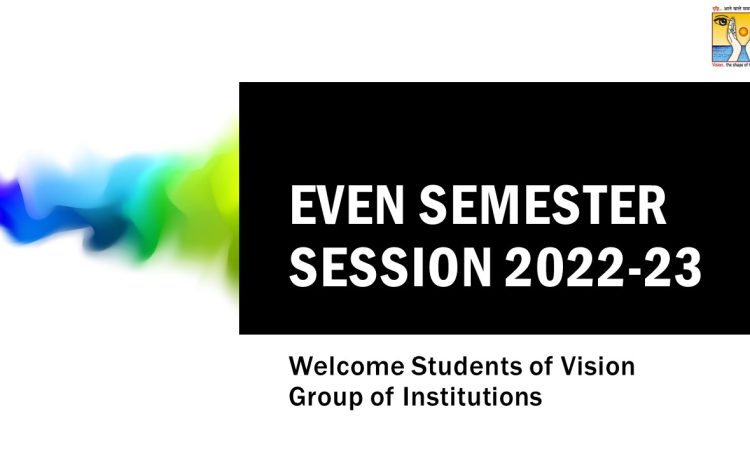Discussion board
What’s new
Digital transformation has become an imperative for every organization. The integration of digital technology into every business process and function will allow organizations to do more with less, which is crucial in today’s economy. The next decade will not be like the last and digital technology is necessary to navigate the headwinds. It will also help organizations build resilience and differentiate themselves.
The demand for developers in various industries, including public sector, education, energy, retail, entertainment and transportation, has increased. This presents an opportunity for you, the future developers! Though this defintely calls for learning various new things. I have discussed DevOps and Low-Code No -Code extensively in my lectures. The adoption of DevOps is becoming the default way to deploy code, creating opportunities for organizations to adopt new processes. By 2025, 70% of new applications deployed for the enterprise will use low-code or no-code tools, which will further enable organizations to achieve their digital transformation goals.
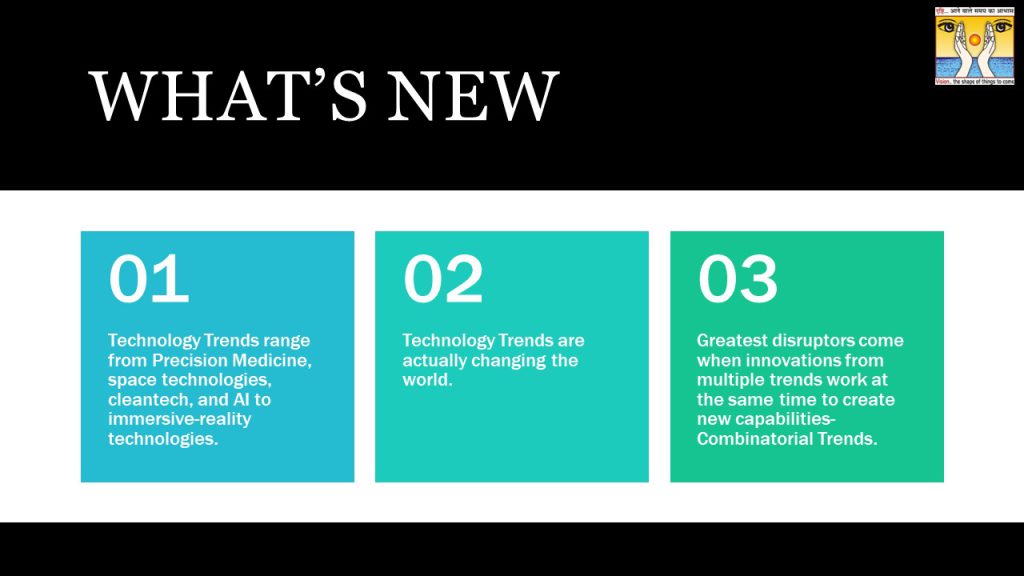
Data and AI are the current focus in digital transformation. The challenge is to get the data estate in order and apply large AI models as platforms. The age of AI is here and the core business logic is being written by software. By 2025, 10% of all data will be produced by generative AI models, and analytics will become a critical part of the product experience. This means that data and AI are essential in the digital transformation journey for every organization.
What’s now
Narrow intelligence is a highly specialized and focused form of intelligence, such as being very good at playing chess or solving mathematical problems. General intelligence, on the other hand, is a more well-rounded form of intelligence that encompasses a wide range of cognitive abilities, such as reasoning, problem-solving, and learning.
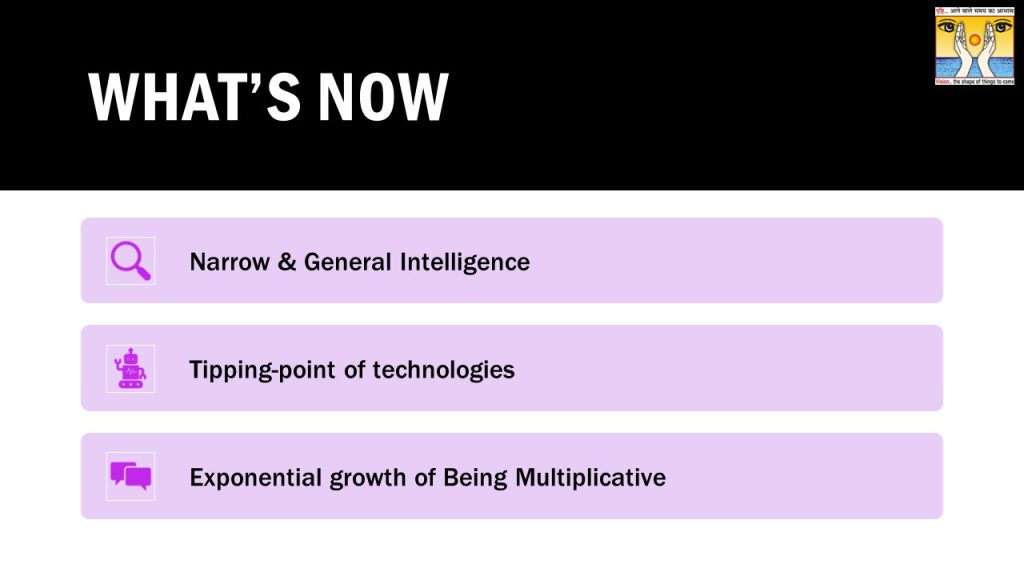
In the context of comparing humans with other species, we often find species who are far superior to humans in narrow intelligence with their specialized abilities and skills in specific areas. For example birds’ remarkable navigational abilities and dogs’ ability to track scents. Humans, in comparison, have a higher level of general intelligence, which refers to their ability to think, reason, and understand complex concepts across a wide range of domains. This general intelligence allows humans to use tools, communicate with each other, and create complex societies, contributing to their dominant position on the planet.
In 2022, I had given presentation on 10 technology trends identified as having the potential to transform the way we live and work. These trends encompass areas such as space technologies, cleantech, AI, and immersive-reality technologies. The real potential of these technologies lies in their combination, or what is referred to as “combinatorial trends”. For organizations and engineers alike, the challenge in 2023 is to not just focus on individual trends or ramping up technology talent but to think about how these technologies can work together to create new capabilities.
The impact of combining these technologies is not just additive but multiplicative, enabling exciting new possibilities in various domains across sectors.
Combining these technologies can have a multiplicative impact, rather than simply an additive one. For example, the technologies used in electric cars include cloud and edge computing, applied AI and machine learning, clean energy and sustainable consumption technologies, next-generation software technologies, and trust architectures. Together, these technologies provide a new future of terrestrial mobility that is autonomous, connected, intelligent, and electrified. Similarly, patient-level treatments such as blood-type-based treatments or cell targeting are powered by advances in bioengineering, immersive-reality technologies, Web3, applied AI and machine learning, and cloud and edge computing.
What’s next
Life 1.0, Life 2.0, and Life 3.0 are terms used to describe different stages of evolution of life on earth.
Life 1.0 refers to the earliest forms of life on earth, such as bacteria and single-celled organisms. These organisms were limited to simple processes like reproduction and survival. They did not have the ability to think, feel or make decisions. They were limited by their genes and biology, and could only evolve slowly over time through genetic mutations.
Life 2.0 refers to the cultural stage of life on Earth, where humans developed the ability to create culture, technology, and civilization. With the creation of tools and communication, humans were able to shape their environment and influence their own evolution. This allowed humans to transcend their biology and gain greater control over their lives.
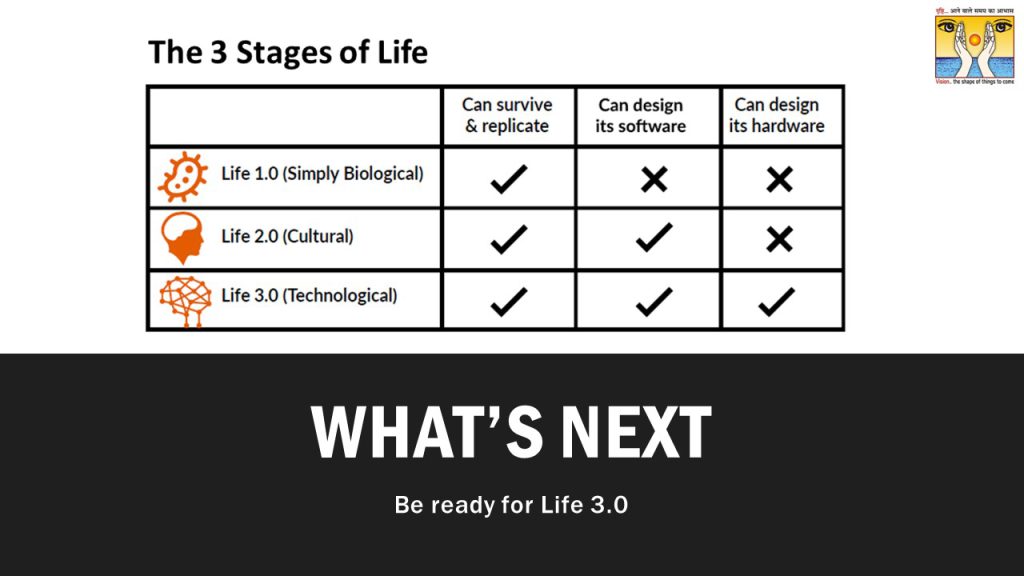
Life 3.0 is the utopian future and refers to the technological stage of life on Earth, where artificial intelligence and advanced technology will enable life forms to transcends biology and culture. This stage of life will be characterized by beings that can design their own evolution and shape the future of life in the universe. In this stage, life forms will be able to manipulate matter and energy at a molecular and atomic level, and create new forms of life that are beyond biological or cultural evolution.
So, in essence, Life 1.0 was about survival, Life 2.0 was about adaptation, and Life 3.0 is about transcendence. It is the evolution of life from simple organisms, to complex beings capable of self-reflection and control, to beings that have the potential to control and shape their own evolution. And all this will be possible through technology. This is a fascinating and rapidly evolving area of study and has the potential to shape the future of our species and the world around us in ways that we can only imagine.
What’s needed
As college students, you are at the forefront of shaping the future. The technological landscape is rapidly changing and it’s important to stay ahead of the curve by learning new technologies and skills that will play an important role in the next generation. Keeping yourself updated with the latest advancements will not only make you more employable, but it will also help you understand and appreciate the impact technology will have on the world in the future.
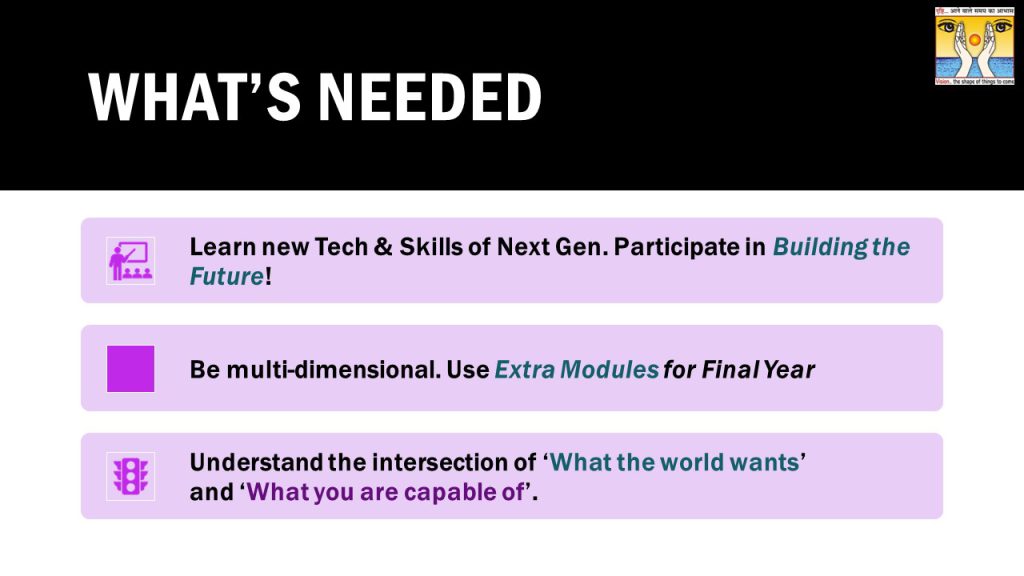
In your final year of college, take advantage of the extra modules available to you. These modules can help you expand your knowledge and provide you with hands-on experience in areas that interest you. Not only will this give you a competitive edge in the job market, but it will also help you develop a more multi-dimensional skill set.
Finally, it’s important to understand the intersection of what the world wants and what you are capable of. Take the time to reflect on your strengths, passions, and interests. Try to identify how these align with the needs and demands of the world. This understanding can help you find a career that is both fulfilling and in demand. By taking an active role in building the future, you have the opportunity to make a real impact and leave your mark on the world.

